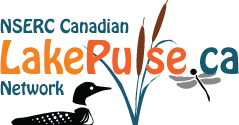Interim theme leader: Yannick Huot, Université de Sherbrooke
Project 9: An integrative assessment of lake ecoservices: what biophysical features package ecoservice bundles and how do these change in regions across Canada?
Project leader: Roxane Maranger, Université de Montréal
Summary:
Main objective: Develop an ecosystem services framework to assess the vulnerability of different lake types to anthropogenic drivers (land use and climate change) based on simple biophysical measures.
Lakes are iconic features on the Canadian landscape that in some way define our national identity. They provide Canadians with a number of different ecosystem services such as drinking water, water for irrigation, hydropower, provide fish, act as sites for recreational pleasure and spiritual enjoyment. They also serve to mitigate climate and cycle nutrients among other regulatory ecoservices. The ecoservice concept was developed to better communicate the valuable commodities ecosystems provide humanity while simultaneously offering us a framework to better understand social-ecological interactions with the aim of supporting conservation and policy efforts. The approach has come under some scrutiny as it can be considered rather descriptive and in some cases restrictive in that some ecoservices are inherently less valued then others as a function of stakeholder bias. Our aim is to develop an integrative evaluation of lake ecoservices across several regions in Canada with the goal of providing policy makers with some simple biophysical metrics that could be used to assess lake vulnerabilities related to ecoservice tradeoffs. This innovative approach to the ecoservice concept will ideally serve as an effective and unbiased communication tool aimed to protect Canadian lakes now and under different landuse and climate change scenarios.
Project 10.1: Forecasting the cumulative impacts of human and natural environmental change on the planktonic biodiversity and its function in Canadian lake ecosystems
Project leader: Rolf Vinebrooke, University of Alberta
Summary: The earliest and most sensitive responses of lake ecosystems to environmental change typically occur at the species level within lower trophic levels. Therefore, algal and zooplankton communities are solid prospects as bioindicators of the past, present, and future cumulative impacts of multiple environmental stressors (e.g., climate change, human land-use activities) on lake ecosystems. To translate environmentally induced changes in taxonomic diversity to ecosystem functioning, a functional approach must be adopted in which species traits are considered that affect their ecological performance. Changes in the taxonomic diversity and functional structure of algal and zooplankton communities based on comparison of assembled historical Canadian lake-monitoring and paleolimnological databases with those generated by Lake Pulse will be used to deliver forecasts of changes in biodiversity, function, and ecosystem services within lakes across Canada based on different potential multiple-stressor scenarios. This project fits well with the Network as it integrates many of its environmental and biological sampling efforts so as to provide predictions of the cumulative impacts of global change on the health of Canadian lakes over the next century.
